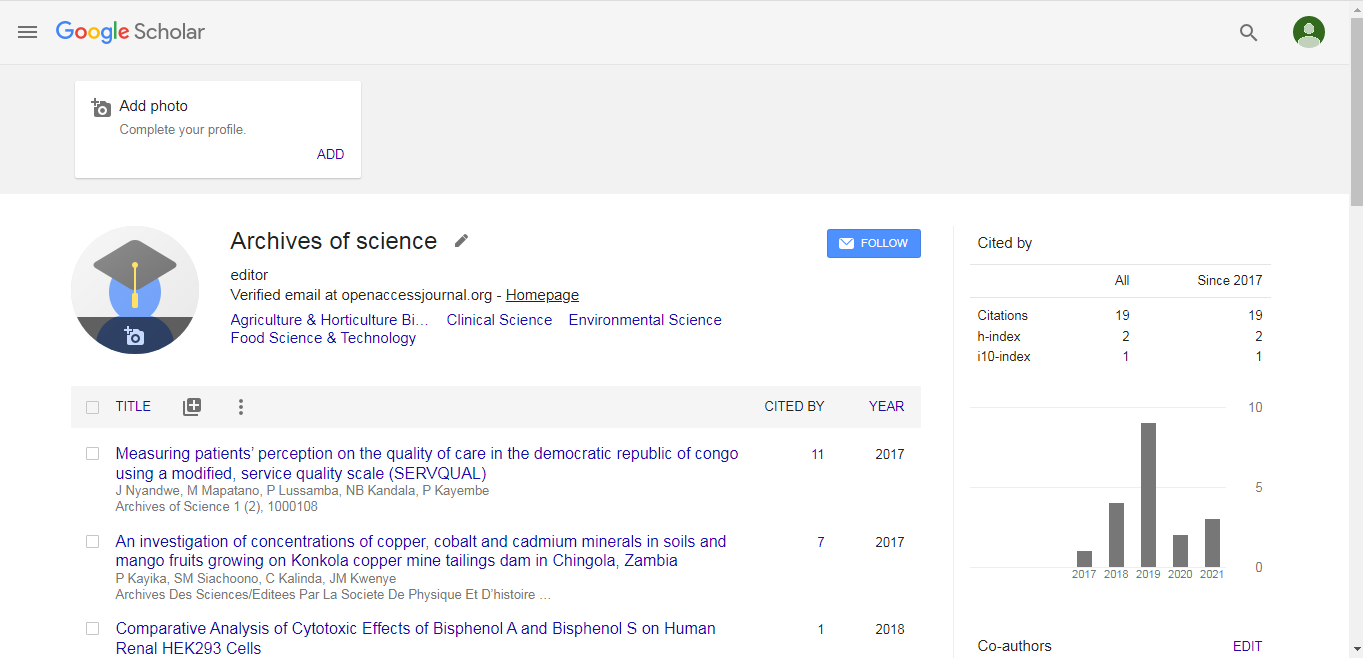Biomaterials 2019: Experimental investigation of microtopography patterns on bacterial attachment - Venkateswara Rao Paruchuri - Indian Institute of Technology Delhi
*Corresponding Author:
Copyright: © 2020 . This is an open-access article distributed under the terms of the Creative Commons Attribution License, which permits unrestricted use, distribution, and reproduction in any medium, provided the original author and source are credited.
Abstract
Statement of the Problem: The adhesion of bacterial cells on any floor is the first step of biofilm formation. Biomedical subject is greater challenge approximately biofilm formation as scientific gadgets get frequently contaminated with microorganism and main to the formation of mature biofilm which could positioned patient lives at threat. Researchers have stated that the surface topography with micro patterns impacts the initial adhesion of bacterial cells. However, the effect of the range of corners at the conduct of bacterial cells is yet to be investigated. In this work, the unique kinds of microscale geometrical functions (Triangle, Square, Star pattern with 4 and 5 corners) are fabricated on polydimethylsiloxane (PDMS) the use of smooth lithography technique. Through static droplet touch perspective analysis, its miles confirmed that the fabricated micro patterns modify the wettability of simple PDMS surface. The effect of variety of corners at the migration and preliminary attachment of Escherichia coli (E. coli) and Staphylococcus aureus (S. Aureus) are investigated the use of fluorescence microscopy. The adhesion of bacterium depends at the range of corners present within the geometrical feature. Moreover, the bacterial adhesion is correlated with the ratio of pillar pass-sectional area to its perimeter. The experimental investigation may be useful in designing the powerful geometry which may be used in making anti-biofouling dependent polymeric devices for biomedical applications.
A sessile way of life affords micro-organism with many benefits, which includes excessive nutrient availability and usage of floor-originated elements in metabolism. On the alternative hand, association of bacteria into biofilms lowers their susceptibility to diverse environmental stresses, inclusive of mechanical shear resulting from fluid flow, chemical disturbances, or antimicrobial retailers. While high-quality for the survival of bacterial cells in harsh environments, this resistant shape of bacterial lifestyles can bring about a wide variety of destructive outcomes for humans, starting from intense dental and hospital infections, to infection of food merchandise in processing centers and subsequent foodborne illness. It has been expected as an example that about eighty% of all clinical infections are biofilm-derived. To correctly fight bacterial biofilms, it's far important to understand how bacterial cells attach to material surfaces.
A bacterial cell’s adventure to a biotic or abiotic floor is a complicated, multistage process that involves locating, approaching, and sensing the proximity of the surface. The
shipping of bacterial cells to an interface can arise because of physical laws which includes diffusion (Brownian movement), convective flow or, within the case of motile micro-organism, their lively movement. Over the course of evolution, the advantages associated with a sessile life-style brought about the development of surface sensing mechanisms that enable microorganism to stumble on the presence of solid surfaces the usage of floor-associated chemical gradients, or chemotaxis. These gradients are born from the presence of diverse chemical species inside the aqueous proximity of a surface or the degradation of sure surface additives. Such gradients can result in interactions between bacterial cells and the fabric surfaces through electrostatic interactions, floor electricity, or precise ligand-receptor interactions. Metabolic substrate which includes amino acids (e.g., aspartate, glutamate, serine, and glycine) and sugar molecules (e.g., glucose, galactose, and fructose) are as an example not unusual chemo attractants for Escherichia coli. As a bacterium approaches a solid-liquid interface and initiates a reversible attachment to the strong surface, the cell may trap ions and small molecules among its body and the fabric surface. This procedure can bring about speedy changes in pH and/or osmolality of the limited microenvironment created between the mobile membrane and the fabric surface. Solid surfaces have also been found to persuade DNA balance and charge of DNA transformation in bacterial cells. Such changes can probably be used as cues by micro-organism that they are within the proximity of the floor, main as much as attachment.
One unique case of awareness-based totally sensing is called “quorum sensing (QS),” wherein bacterial cells alternate small extracellular molecular messengers as a way of orchestrating the conduct of a complicated microbial network. Individual cells can sense the status quo of the encompassing microbial network and subsequently adopt strategies for metabolism and survival. For instance, quorum sensing changed into mentioned to persuade attachment of E. Coli cells to surfaces through altering the cell floor price. Quorum sensing become also suggested to be required inside the adhesion of Serratia marcescens, an opportunistic pathogen and a prime cause of ocular infections, to abiotic surfaces. Overall, the individual desires of unmarried cells, pushed by chemotaxis, and people of the larger bacterial community, broadcasted thru quorum sensing, integrate and trigger the thrust of bacterial cells closer to a surface

 Spanish
Spanish  Chinese
Chinese  Russian
Russian  German
German  French
French  Japanese
Japanese  Portuguese
Portuguese  Hindi
Hindi 